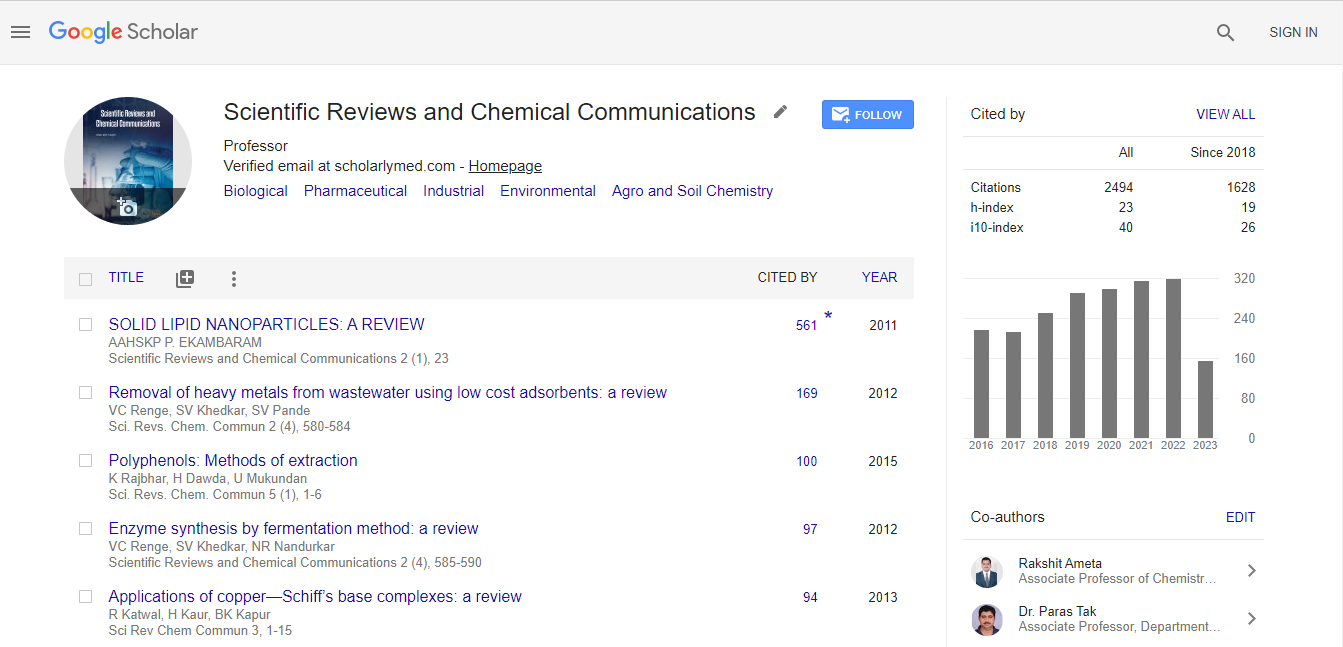Short communication
, Volume: 10( 4)SYNTHESIS OF SOME NEW SCAFFOLDS OF ISOXAZOLIDINE & ISOXAZOLINE DERIVATIVES USING NOVEL CLASS OF NITRONES VIA 1,3-DIPOLAR CYCLOADDITION REACTION USING GREENER CHEMISTRY PROTOCOL AND THEIR FURTHER APPLICATIONS INCLUDING POTENTIAL BIOLOGICAL ACTIVITIES OF THE CYCLOADDUCTS
Some environment friendly greener methodologies have been described for the synthesis of new isoxazolidine and isoxazoline derivatives using new nitrones via 1,3-dipolar cycloaddition reactions. These also include synthesis of bisisoxazolidine and bisisoxazoline derivatives synthesized from glyoxal and terepthalaldehyde respectively. Few new spiro isoxazolidine derivatives have been also reported using new dipolarophiles. Furthermore, these new isoxazolidine and isoxazoline derivatives are found to have vast synthetic potential as they could be used as precursors for the synthesis of a variety of new organic molecules including peptides, 1,3-amino alcohols with potential biological activities. For the synthesis of peptides, it has been observed that CDMT (chloro dimethyl triazine) has found to be better coupling reagent than conventional DCC (dicyclohexyl carbodiamide) due to the formation of insoluble by-product (N,N-dicyclohexylurea) and purification becomes tedious.. The new nitrones reported are synthesized from furfural, dihydropyran, chlorohydrin, glyoxal, terepthalaldehyde and formamide respectively. Significant increase in the reaction rates, excellent yields, and high selectivity (diastereo and regioselectivity) are the important features observed in these cycloaddition reactions following greener methodologies. It has been observed that high diastereoselectivity in these cycloaddition reactions have been observed when the reactions are performed in water. Synthesis of aldehydes and ketones with new nitrones in atom efficient reactions are the most attractive features as they have future scopes in these reactions. The side products (enamines) obtained during the synthesis of aldehydes and ketones has been successfully utilized as new dipolarophiles in these cycloaddition reactions for the synthesis of spiro cycloadducts. Potential biological activities including cytotoxicity of the new molecules have made these new syntheses much more attractive and useful as well
Abstract
Some environment friendly greener methodologies have been described for the synthesis of new isoxazolidine and isoxazoline derivatives using new nitrones via 1,3-dipolar cycloaddition reactions. These also include synthesis of bisisoxazolidine and bisisoxazoline derivatives synthesized from glyoxal and terepthalaldehyde respectively. Few new spiro isoxazolidine derivatives have been also reported using new dipolarophiles. Furthermore, these new isoxazolidine and isoxazoline derivatives are found to have vast synthetic potential as they could be used as precursors for the synthesis of a variety of new organic molecules including peptides, 1,3-amino alcohols with potential biological activities. For the synthesis of peptides, it has been observed that CDMT (chloro dimethyl triazine) has found to be better coupling reagent than conventional DCC (dicyclohexyl carbodiamide) due to the formation of insoluble by-product (N,N-dicyclohexylurea) and purification becomes tedious.. The new nitrones reported are synthesized from furfural, dihydropyran, chlorohydrin, glyoxal, terepthalaldehyde and formamide respectively. Significant increase in the reaction rates, excellent yields, and high selectivity (diastereo and regioselectivity) are the important features observed in these cycloaddition reactions following greener methodologies. It has been observed that high diastereoselectivity in these cycloaddition reactions have been observed when the reactions are performed in water. Synthesis of aldehydes and ketones with new nitrones in atom efficient reactions are the most attractive features as they have future scopes in these reactions. The side products (enamines) obtained during the synthesis of aldehydes and ketones has been successfully utilized as new dipolarophiles in these cycloaddition reactions for the synthesis of spiro cycloadducts. Potential biological activities including cytotoxicity of the new molecules have made these new syntheses much more attractive and useful as well

